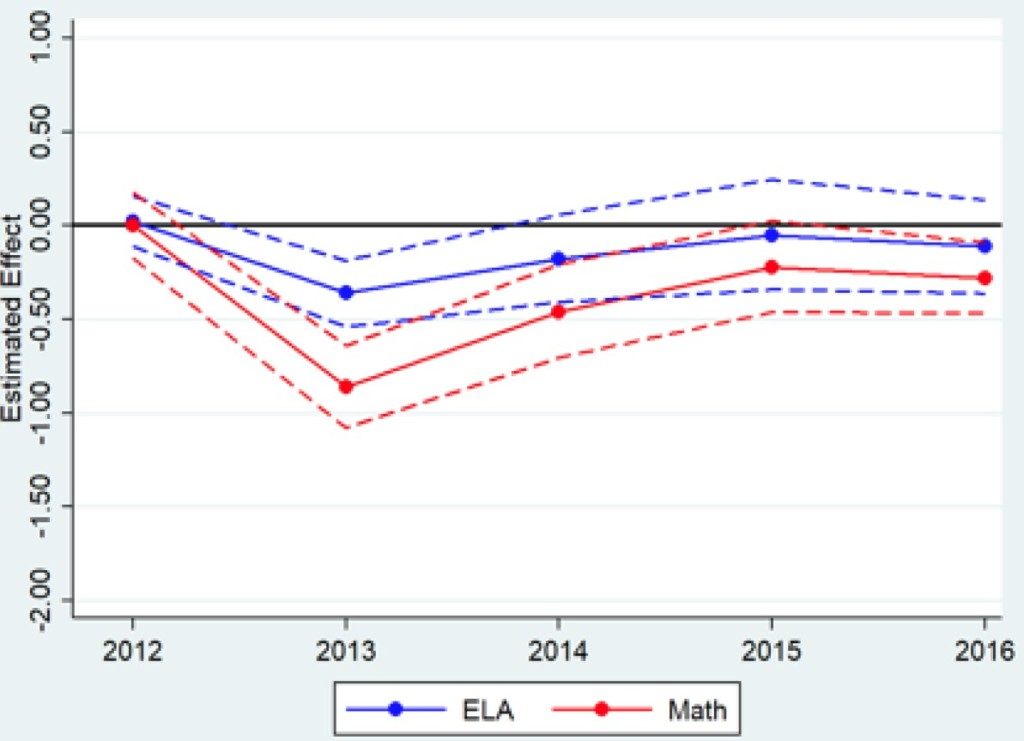Researchers at the University of Arkansas have found that math and reading scores for voucher students in Louisiana remained negative in the fourth and final report on the program.
Voucher supporters had remained hopeful that negative results observed over the last several years would disappear. Despite a big first year plummet in test results, voucher students made significant gains in years 2 and 3, but by the third year, the difference between voucher students and their peers in public schools was not statistically significant.
Meanwhile, fourth-year results dipped enough to be considered “statistically significant” by researchers, a term that implies the researchers are certain the results did not occur by pure chance.
One of the researchers said he was “surprised” by the results.

Despite negative math and reading scores compared to public school counterparts, voucher students were no less likely to enroll in college, the researchers found.
Several points should be taken into consideration when considering the results.
Students on the scholarship program must come from C-, D- or F-rated public schools and must live in households earning at or below 250 percent of the federal poverty level (about $64,000 for a family of four). This doubly disadvantaged group was eligible for a voucher that averaged just $4,925 compared to a per-pupil spending of $8,500 in the study’s baseline year.
Private schools were required to accept all students that applied and were required to administer the state exam in grades 3 through 8 and again in grade 10. Private schools also were required to accept the voucher as the full-tuition amount and were prohibited from charging more. Very few Louisiana private schools participated in the program as a result.
According to the researchers, the severity of regulations may explain why only one-third of private schools in Louisiana have been willing to participate in the voucher program.
A 2013 Fordham Institute study found that certain regulations, such as restrictions on admissions and curriculum testing, negatively impacted a school’s willingness to participate in a voucher program.
Florida’s original voucher, the Opportunity Scholarship, had many of the same strict regulations as the Louisiana voucher when it began in 1999. A Miami Herald survey of 300 private schools in South Florida found only three schools willing to participate in the first year and only 50 in the second year.[1] Statewide, the number of participating schools was just over 100, but only after a $500,000 donation to the Children’s Scholarship Fund to provide grants to participating schools.[2] Today, more than 1,800 private schools participate in the less restrictive Florida Tax Credit Scholarship program.
Corey DeAngelis, a researcher at the Cato Institute in Washington, D.C., believes the limited number of participating private schools in Louisiana also led to a reduction in the number of quality schools participating.
“Evidence suggests it is more likely that the burdensome regulations have unintentionally led to fewer high-quality options for families,” DeAngelis wrote.
Researchers also disproved a claim that the voucher “cream skimmed” the best students. In the Louisiana program, voucher students were far more likely to be black and have lower household incomes and lower test scores in the year prior to accepting the voucher.
[1] De Vise, Daniel. “Voucher Plan Finds Limited Support 24 Private Schools Willing to Commit,” Miami Herald, January 30, 2000.
[2] Hegarty, Steven. “With money and fight, Kirtley pushes for school choice,” St. Petersburg Times, May 21, 2000.


